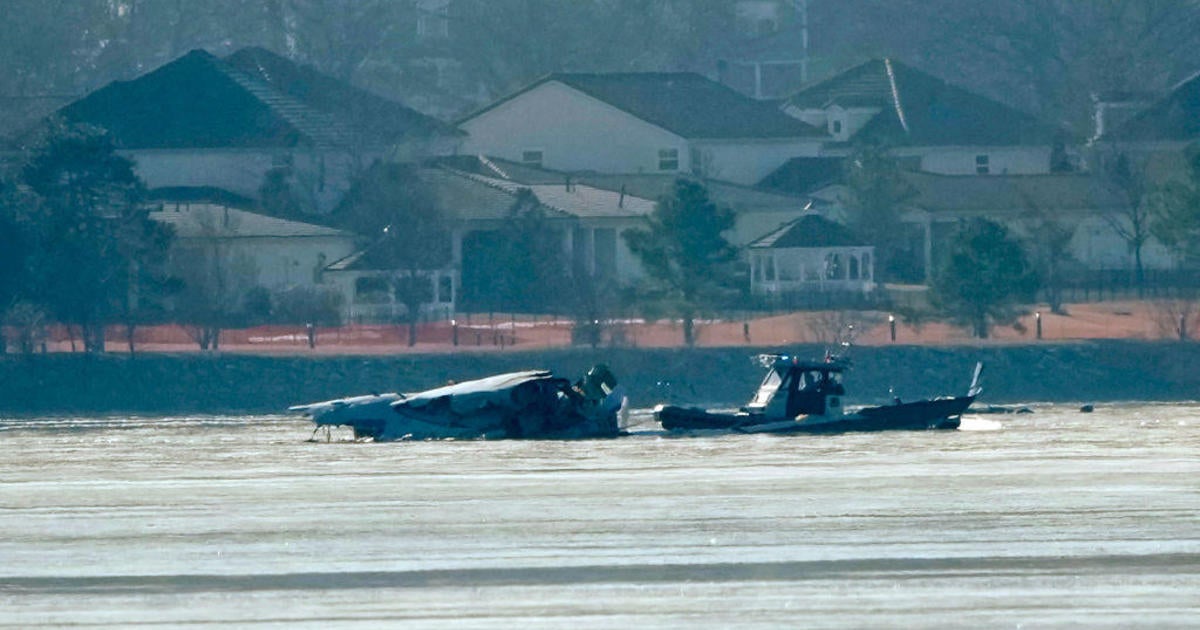This data point is one of several key mysteries investigators are exploring as they seek to explain what caused the nation’s worst air disaster in more than a decade, aviation experts said.
The permitted flight ceiling on the Potomac River near Reagan National Airport is 200 feet – a crucial ceiling for keeping the heavy flow of military helicopters safely clear of the steady commercial aircraft traffic into and out of the nation’s capital.
CBS News
Data from FlightRadar24, which tracks and records aircraft data for most flights across the U.S., showed the helicopter’s last estimated altitude was about 400 feet when it crashed. The jet’s altitude was about 375 to 400 feet, according to data from FlightAware and FlightRadar24.
“They’re military pilots; they’re familiar with the routes,” Feith said. “Why is it on this day, on that flight, they were [as much as] 150 to 200 feet higher than they knew they should be?”
“I don’t want to speculate on the cause, but I can speculate what’s going through the mind of the investigators,” Wallace said. “I think that is very likely going to be the focus.”
Secretary of Defense Pete Hegseth said the investigation is examining if the aircraft was at the right altitude at the time. NTSB investigators have not so far disclosed the helicopter’s altitude in their briefings, and said their working groups will evaluate “pre-impact course and altitude.”
Andrew Harnik / Getty Images
The Army helicopter’s deviation above the flight ceiling is one of several similar near collisions involving helicopters at Reagan National that date back more than a decade.
The pilot’s report said the aircraft “came within very close contact of another aircraft.”
“This occurred about 400 feet off the ground to the point where the pilot monitoring had to take the controls to make a correction in order to prevent it from becoming a midair collision,” the 2015 report said.
“As we continued our approach; Tower instructed the helicopter to ‘make a right 360 for a jet on a 2 mile final for Runway 33; and to report him in sight,” the pilot wrote.
“The Tower then asked the helicopter if he had us in sight. He replied ‘yes’; and the Tower told him to maintain visual separation,” the report said. “As we began our turn from base to final; the helicopter made what looked like a right turn directly into our flight path.”
The pilot reported having to execute a hard right turn and abort the approach to avoid a collision. “I’m not sure how close we came to the helicopter since it was on the left side of the aircraft; but I would guess it was only a few hundred feet,” the report said.
Feith said he believes investigators from the NTSB and the military will be examining the altimeters in the helicopter to see if they malfunctioned, checking for any wind impact that could have hindered the pilot’s ability to hold the helicopter at 200 feet, and exploring whether or not the crew should have been using night vision goggles.
He said the flight recorders on both aircraft will be helpful in determining what happened. Authorities reported that they had been recovered from the Potomac River on Thursday.
“If they had been at 200 feet, there wouldn’t have been an issue because the plane typically would’ve been 400 to 500 feet off the ground,” Feith said. “Those two RJ [regional jet] pilots didn’t know what hit them until the helicopter hit them.”





